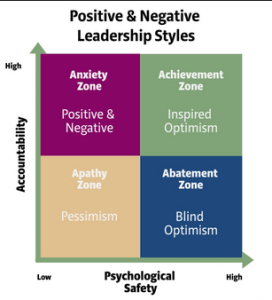Leadership styles significantly impact team effectiveness, influencing communication, collaboration, motivation, and overall performance. Different leadership styles are suited to various situations and organizational cultures. This study focuses on several leadership styles and their impact on team effectiveness.

Leadership Styles and their Impact on Team Effectiveness
-
Table of Contents
ToggleAutocratic Leadership:
- Characteristics: Centralized decision-making, limited team input.
- Impact on Teams: Quick decision-making but may lead to reduced morale and creativity. Effective in emergencies or when quick decisions are crucial.
-
Democratic Leadership:
- Characteristics: Involves the team in decision-making, values input and collaboration.
- Impact on Teams: Fosters a sense of ownership and commitment. Encourages creativity and innovation. Decision-making may take longer, but team members are more engaged.
-
Transformational Leadership:
- Characteristics: Inspires and motivates, focuses on long-term goals, encourages personal and professional development.
- Impact on Teams: High levels of motivation, innovation, and commitment. Effective in driving organizational change. Can create a positive and empowering work culture.
-
Transactional Leadership:
- Characteristics: Focuses on tasks and rewards, emphasizes clear roles and responsibilities.
- Impact on Teams: Effective in routine and structured environments. Provides clear expectations, rewards performance. May lack flexibility in dynamic situations.
-
Laissez-Faire Leadership:
- Characteristics: Hands-off approach, delegates decision-making to team members.
- Impact on Teams: Allows for individual creativity and autonomy. Effective in highly skilled and self-motivated teams. May lead to a lack of direction in less motivated teams.
-
Servant Leadership:
- Characteristics: Puts the needs of the team first, focuses on serving and supporting team members.
- Impact on Teams: Builds a strong sense of community and collaboration. Fosters trust and loyalty. May require assertiveness to balance serving others with achieving team goals.
-
Charismatic Leadership:
- Characteristics: Inspires and motivates through personal charisma, vision, and enthusiasm.
- Impact on Teams: Can create a highly motivated and energized team. Risk of dependency on the leader’s personality. Effectiveness may diminish if the leader’s charisma is perceived as manipulative.
-
Coaching Leadership:
- Characteristics: Focuses on developing individuals, provides guidance and feedback.
- Impact on Teams: Supports individual growth and skill development. Encourages continuous learning. May require a balance to ensure team goals are not overshadowed by individual development.
-
Transactional Leadership:
- Characteristics: Establishes clear roles and expectations, rewards or punishes based on performance.
- Impact on Teams: Effective in structured environments. Provides clarity but may stifle creativity. Can lead to a transactional relationship without strong emotional engagement.
-
Adaptive Leadership:
- Characteristics: Adjusts leadership style based on the situation, challenges, and team needs.
- Impact on Teams: Effective in dynamic environments. Allows for flexibility and responsiveness to changing circumstances. Requires a deep understanding of the team and organizational context.
It’s important to note that effective leadership often involves a combination of styles, adapted to the specific needs of the team and the challenges at hand. The most successful leaders are often those who can flexibly apply different styles based on the context and the individuals involved. Additionally, effective communication and emotional intelligence are critical components of successful leadership, regardless of the chosen style.
